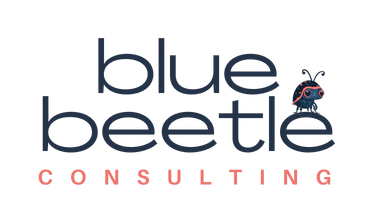The anatomy of making a decision – how to make the best one!
A quick google search on decisions in the human brain delivers staggering statistics around the amount, density, and depth of decisions that the human brain makes every day. Estimates range from the thousands to the millions, and while these numbers would vary depending on multiple situational factors, I think we can all agree that we make a lot. From the decision to get out of bed in the morning, through to what to eat for lunch, where to stand on the bus, where to drive your car or whether or not to engage with a person ranting in public.
Decisions can be very large with heavy consequences, such as whether to buy a house or marry your partner. These decisions require large amounts of information, time and clarity to ensure the correct decision is made. They may only be made once in your lifetime.
Sometimes decisions are miniscule, undetectable or even involuntary, such as where your foot will land on the next step, whether to blink or whether to look up from the computer. These would amount to millions simply on their own.
All decisions though, whether large or small have things in common that allow for the best possible outcomes of that decision. Here, I will discuss some of those factors and how you can enhance them to make the best possible decision, particularly when the decision is time critical.
Each time a decision arises, there are questions that you need to ask.
What do I need to achieve from this decision?
This is the most important trigger for making a decision. The outcome of the decision should always be front and centre. If you don’t know what you are aiming for how will you know when you hit it?
What is the specific goal that I need to reach?
Personal goals may differ from the necessary outcome to a decision. How will you balance your own needs against the outcomes? Your own goals may need to be secondary or they may be the required outcome. Either way, acknowledging them is a crucial first step.
What are my options?
Inherently, a decision has 2 or more outcomes. These outcomes can be further divided depending on which initial path you take and what your goals are. It can be a real life ‘choose your own adventure’ book in its entirety. Identifying each possible outcome further informs the decision maker on where to go next.
Have I done this before?
If this is a decision you’ve needed to make before, analyse the outcomes from your last experience. Were the goals met? Was the outcome satisfactory, enjoyable, positive? Or do I need to consider adjusting my decision based on this history?
Do I have boundaries that need to be worked within?
Decisions often involve guidelines, doctrine or rules about what options are available for you to base your decision upon. Consider an employee who wants to take time off at a certain time. Firstly, you need to know, ‘do the rules of their employment allow for this leave?’ The contract or boundaries involved may remove your own decision making process as you are restricted to working within the rules.
In terms of critical decision making, split-second decisions also need to be made based on learned information and knowing what support mechanisms are available should this decision not deliver the expected outcome. Legislative and governance parameters may play a large part in supporting your final decision.
For each result, what are the pro’s and con’s?
This may seem fairly obvious, and sometimes an exploration of the actual pros and cons can be time consuming. However consider that initial, emotional decisions based only on the immediate information available to you may not actually yield the best results.
Don’t be afraid to put off the decision until you have more information, facts or simply longer to review.
You may seek input from others to assist in weighing up your options. Involving others also requires you to have enough information about their agenda, level of involvement and interest in the outcome.
Conclusion
The only thing left now is to actually make the decision. If you've considered all of the above questions, you know not only what you are aiming to achieve, what other choices you are discarding and why, but also all the possible outcomes you can expect.
Your decision may not be popular or it may not sit well with you, but you now know it is considered, measured and optimum and you can support your decision based on the available information.
Ensure you continue to evaluate your decision, and the results of that decision, because sometime in the future you may be required to make it again. Be open to feedback, both verbal and non-verbal and continue to factor that into further decisions.
Most importantly, be open to changing your decision. Be flexible. If the decision turns out to be incorrect, own the situation. Work to rectify it if you can and continue to evaluate your motivations, goals and the input of others.
Good luck.
By Ben Morris


